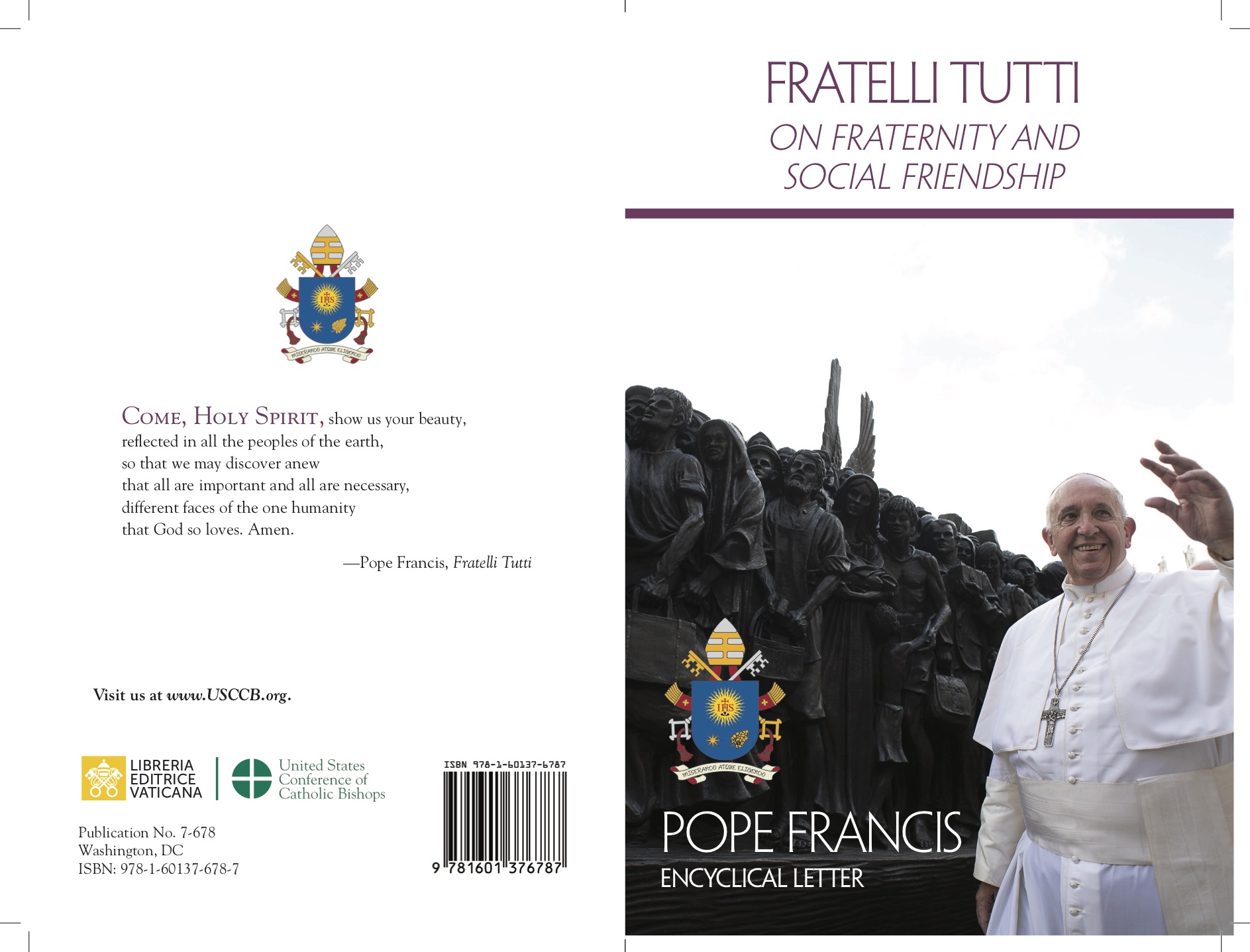
Early in the 2000s, a renewed interest arose around the figure of Paul of Tarsus. Sensational discoveries brought to light, first the oldest portrait of the Apostle to the Gentiles in the Catacombs of Santa Tecla, Rome, subsequently a roughly hewn marble sarcophagus was found under the Papal Altar in the Pontifical Basilica attributed to the Author of the Thirteen Epistles in the New Testament.
On 29 June 2009, Benedict xvi confirmed this attribution during the First Vespers at the Closing of the Pauline Year. On that occasion he announced the results of the careful scientific analysis of the tomb, two thousand years after the birth of Paul. A special probe, introduced into the sarcophagus, revealed traces of a precious purple-coloured linen fabric, laminated with pure gold leaf, remnants of a blue linen fabric, grains of red incense and other substances. Minute fragments of bone were also identified. The latter, subjected to carbon-14 dating, conducted by experts who were unaware of their provenance, were traced back to someone who had lived between the first and second centuries. “This would seem to confirm the unanimous and undisputed tradition which claims that these are the mortal remains of the Apostle Paul”, Pope Ratzinger announced.
Fifteen years later, we visited the tomb with Father Lodovico Torrisi, Master of Novices at the Abbey of Saint Paul Outside-the-Walls, which has been entrusted to the Benedictine monks since the 8th century. “The tomb has never been opened”, Fr Lodovico explained, “because the vibration of the removal of the lid and contact with light and oxygen could destroy, disintegrate, what remains of Paul’s corpse”.
At the foot of the altar, under the wonderful ciborium created in 1285 by the famous sculptor Arnolfo di Cambio, the stone sarcophagus, brought to light in 2006 by researchers, is visible. A small flame burns there continuously, day and night, to indicate the sacredness of the place. Next to it, and clearly visible in a bronze and glass urn, are the chains the Apostle wore during his imprisonment in Rome. They have been there since the 4th century and are carried in procession inside the Basilica every 29th June, the Solemnity of Saints Peter and Paul.
Through a grating, below floor level, one can see a marble slab composed of two pieces measuring 2.12 x 1.27 meters on which the inscription Paulo Apostolo Mart stands out. This slab has three openings: one round and two square which date back to the 4th-5th century. They bear evidence of the worship that was practiced here from the very beginning, even before the construction of a church. The purpose of these openings was to obtain “contact relics”, namely strips of cloth that were pushed in until they touched the sarcophagus and pulled out again.
“The beheading of Saint Paul” — Fr Torrisi explained — “took place very close to the place of burial, some four kilometers from the Basilica, at Aquas Salvias, where the Three Fountains Abbey stands today. Paul was brought here from the Mamertine Prison, near the forum, where he was being held prisoner. Historians have not yet understood why the martyrdom took place here”. He was beheaded outside the Aurelian Walls of Rome, in an insalubrious place, near the Via Ostiense between 65 and 67 A.D., under the Emperor Nero.
When his head fell to the ground, it bounced three times and according to tradition, three springs miraculously gushed up at those three points: the first hot, the second tepid, the third cold. Fairly recently, along the avenue that skirts the Trappist Abbey, paving similar to that of ancient Rome has been laid to recall the route the Saint followed before his execution. A marble inscription on the façade of the Church of San Paolo al Martirio, built in the 5th century, and renovated in 1599 by the architect Giacomo Della Porta, as well as part of the abbey complex, reads: “S. Pauli Apostoli martyrii locus ubi tres fontes mirabiliter eruperunt”. Inside the church, there are three shrines, built on the site of each of the fountains aligned at the same distance, but at different levels. Since 1950, following urbanization and the consequent pollution of the water-table, the flow of water has been closed and its distribution to the faithful discontinued.
Paul, arrested by the Jews, had come to Rome in 61 A.D. to be judged because he was a Roman citizen. Born a Jew with the name of Saul, he enjoyed Roman citizenship like all the inhabitants of Tarsus, his hometown in Cilicia, south of present-day Turkey. Having moved to Jerusalem, he had become a trusted man of the Sanhedrin and later a fierce persecutor of Christians. His conversion took place on the road to Damascus in 36 A.D. “Saint Paul”, Father Torrisi observed, “is represented with a sword to indicate that he defended the Word of God. To defend the Gospel he then died an atrocious death by the sword, like a valiant soldier. It is said that after the beheading a Roman matron, a Christian, took care of the body, placed it in a sarcophagus and buried it by the Via Ostiensis”, the Benedictine continued.
According to accounts that have come down to us, this woman was called Lucina. Two miles from the Aquas Salvias, she owned a burial area inside a pagan cemetery with about five thousand graves. Excavations have confirmed the existence of this necropolis with burial niches and graves for the poor and freed slaves. Paul’s head was found later and is preserved above the ciborium of the Basilica of Saint John Lateran together with that of Peter, buried in the Vatican Grottoes. According to the Roman Martyrology, the two were killed on the same day.
Their mortal remains are also linked because during the persecutions they were both placed in the Catacombs of Saint Sebastian. This is documented by some graffiti and votive offerings found in the archaeological site on the Appian Way. Subsequently, the remains of the two Patron Saints of Rome were returned to their original places of burial. The site of Paul’s burial immediately became a popular destination for pilgrims, who went there to pray and to honour the Saint. They built a cella memoriae (commemorative shrine). Right from the early years, many baptized people wished to be buried in the surrounding area and the necropolis steadily changed from pagan to Christian.
“Many chose to have their tomb placed near that of the Apostle” the priest recounted, indicating the numerous epigraphs in Latin, Greek and Hebrew on the walls of the cloister of the Abbey of Saint Paul Outside-the-Walls, designed and decorated by Pietro Vassalletto. “During the subsequent reconstruction works, excavations or strengthening of the foundations, many artifacts were found in the pagan and Christian graves here. They probably belonged to people with a certain social status. Roman Christianity was born right here in this area”. Among the most prestigious artifacts, found in this area in 1838, is the “Dogmatic Sarcophagus”, dating from the 4th century, now kept in the Vatican Museums.
Freedom of worship was established in 313 of the Christian Era. With the Edict of Milan, Emperor Constantine wanted to honour the memory of the Apostle to the Gentiles worthily by enlarging the site of the first burial in 324 with a monumental basilica, the base of which is still visible today at the foot of the Papal Altar. The body of the Saint was first placed in a copper coffin. The church, not very large to begin with, was later enlarged by the Emperors Theodosius, Arcadius and Valentinian ii , thus becoming a very large basilica with five naves, known as the “Theodosian” or “of the three Emperors”.
Between the 12th and 13th centuries, three great artists worked on the site: Pietro Cavallini, whose frescoes have unfortunately been lost, Arnolfo di Cambio, who produced a fine ciborium, and Vassalletto who made the admirable candelabrum for the Easter Candle, which survived the devastating fire that destroyed the Theodosian Basilica in a single night, in July 1823.
What caused the fire is unknown, but some have attributed it to a torch, perhaps left unattended by workers who were repairing the roof. The day after the catastrophe the people of Rome flocked to see what remained of the church. The scene was devastating, heartbreaking. An exceptional witness, the French writer Stendhal, described it as “one of the most impressive spectacles” ever seen: “I had an impression of severe beauty, sad as Mozart’s music. The depressing remains of the terrible disaster were still smoldering; the entire church was cluttered with black, smoking, half-burnt rafters; the shafts of the columns, split along their entire height, threatened to collapse at any moment”.
On 25 January 1825, with the Encyclical Ad Plurimas, Leo xii launched an Appeal to the faithful for the reconstruction of the building, which would be identical, re-using the material spared by the fire to preserve the early Christian tradition. It was consecrated by Pius ix on 10 December 1854. The rebuilding of Saint Paul Outside-the-Walls became the busiest work site of the Church of Rome in those years of the 19th century. The Basilica that emerged from the ruins is actually the one we see standing today.
Not only Catholics but the entire world responded en masse to Leo xii’s Appeal: blocks of malachite and lapis lazuli were donated by Tsar Nicholas i , (1825-1855) just as columns and panes of the finest alabaster for the windows were sent by the ruler of Egypt.
At that time, Paul of Tarsus was recognized as a universal point of reference for Believers and Gentiles. Evocative of the great number of people who gathered around this impressive Christian figure are the marble plaques on the walls of the apse on which are engraved the names of the numerous cardinals and bishops present on the day of the consecration. They were in Rome for the Proclamation of the Dogma of the Immaculate Conception, and they concelebrated mass with the Successor of Peter, symbolically under the gaze of all the Popes of history, portrayed in the large mosaic medallions, that decorate the nave.
As is known, Paul’s apostolate extended from the Jews to embrace all peoples. In Arabia, Asia Minor, Macedonia, Cyprus, Greece he founded numerous Christian communities. Emblematic of the peregrinations of the Apostle to the Gentiles is the relic of the staff he used during his travels, now kept in the Pontifical Basilica’s museum. “Paul is venerated by people world-wide, Christian and otherwise,” Father Torrisi reminded us. “He is a fundamental figure on the journey to full Christian unity”. Worship and ecumenical celebrations are held in the basilica; besides which, this place is connected to particularly meaningful episodes and objects related to Christian unity. Here, in the Abbot’s lodgings, on 25 January 1959, John xxiii announced to the Cardinals his intention to summon the Second Vatican Ecumenical Council. Furthermore, in 2006, Benedict xvi fulfilled Saint John Paul ii’s wish to donate two links of the chains of the Apostle to the Gentiles to the Patriarch of Athens, Christodoulos.
Finally, on the path to full communion among Christians, a prominent place is occupied by the Holy Door of the Basilica of Saint Paul, which will open next 5 January: “The door is a very important element. It was made in Constantinople and donated in 1070. Originally it was placed at the main entrance. Since the fire damaged it, reducing its size, it has been moved to a side entrance. “In view of the Jubilee” — Father Torrisi concluded — “we hope that the faithful, pilgrims and tourists from all over the world may experience deep conversion and faith, union and contact with the Lord here through the testimony of the Apostle Paul.”
By Paolo Ondarza













 Purchase the Encyclical here Fratelli Tutti
Purchase the Encyclical here Fratelli Tutti
